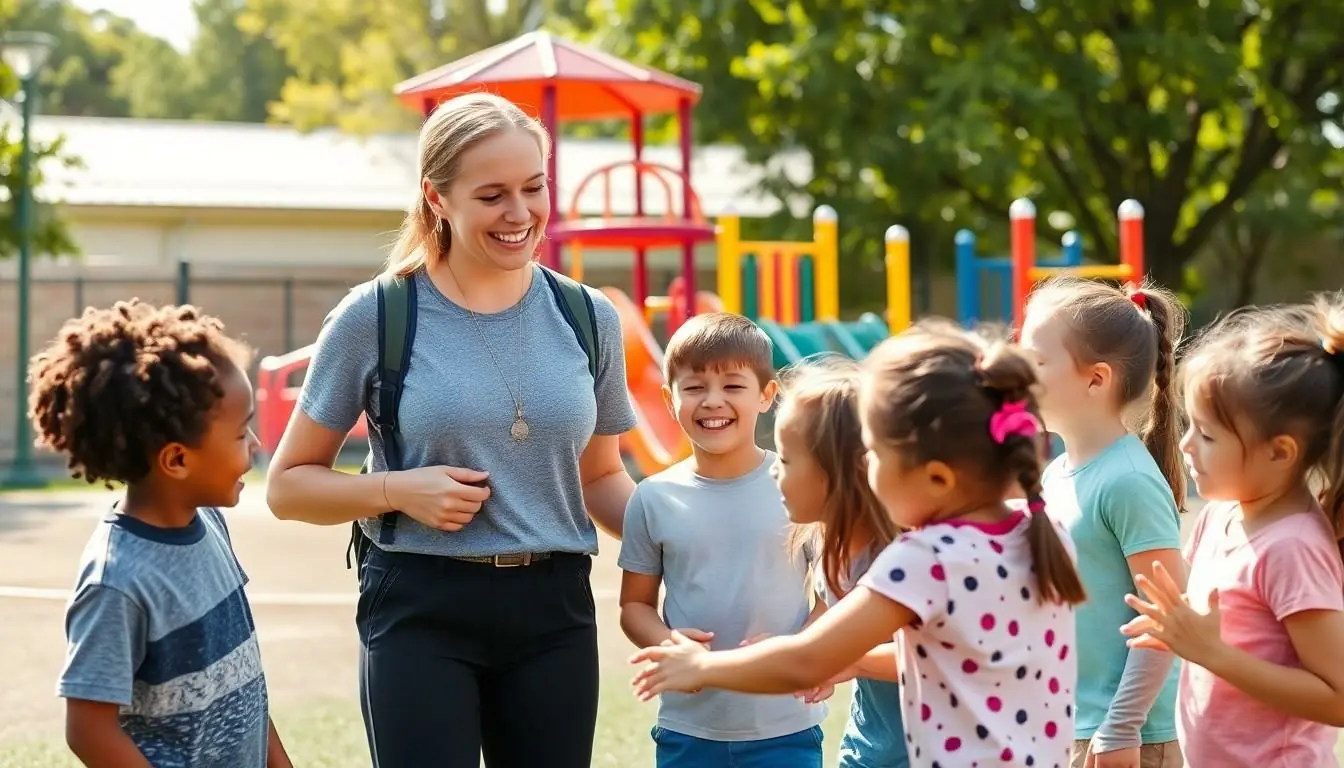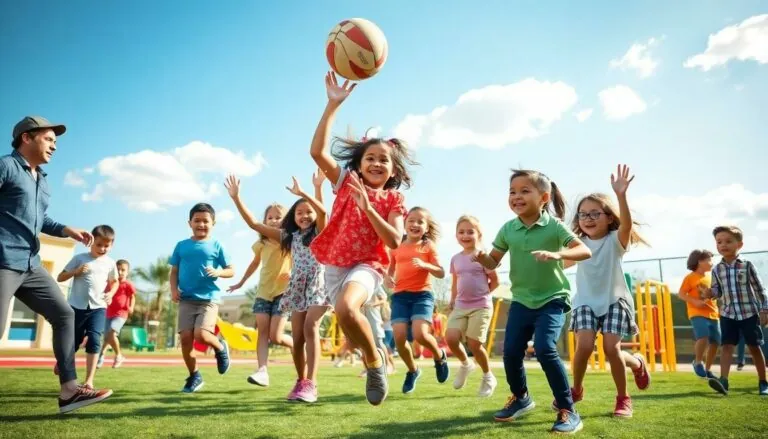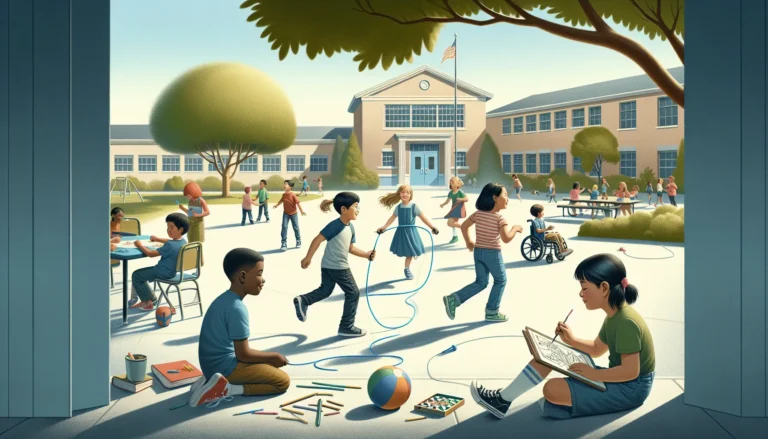In today’s fast-paced world, keeping kids active is more crucial than ever. Dynamic physical education isn’t just about running laps or playing dodgeball; it’s about engaging young minds and bodies in fun, innovative ways. Imagine a classroom where kids leap, stretch, and giggle their way to fitness while learning the importance of teamwork and healthy habits. Sounds like a dream, right? Well, it doesn’t have to be!
Table of Contents
ToggleOverview of Dynamic Physical Education
Dynamic physical education focuses on keeping elementary school children engaged through active learning experiences. Engaging activities stimulate interest and enthusiasm while promoting physical fitness. Teachers design these programs to include multiple formats, such as games, challenges, and cooperative tasks that foster teamwork.
This educational approach builds skills in areas like coordination, balance, and agility. Movement-based lessons increase not only physical health but also cognitive development. Children learn to communicate effectively with peers during group activities, enhancing their social skills.
Innovative teaching methods encourage creativity within physical activities. It motivates students who may not enjoy traditional sports, providing alternatives for everyone. By incorporating diverse activities, educators can reach children with varying interests and abilities.
Instructional strategies might involve adapting lessons to accommodate different learning styles. Emotional intelligence develops as children navigate successes and setbacks in a supportive environment. Physical education becomes a platform for life skills, such as resilience, respect, and responsibility.
Research highlights the long-term benefits of regular physical activity on children’s overall well-being. Engaging in dynamic physical education not only cultivates a foundation for healthy habits but also contributes to improved academic performance. It connects physical learning with essential life lessons, making each class a unique experience that promotes lifelong engagement in health and fitness.
Importance of Physical Education in Elementary Schools
Physical education holds a crucial role in the development of elementary school children. Engaging in regular physical activity fosters not just fitness but also overall well-being.
Benefits for Physical and Mental Health
Dynamic physical education programs significantly improve physical health by promoting active lifestyles. They increase cardiovascular fitness and enhance muscular strength. Mental health also benefits, as physical activity helps reduce symptoms of anxiety and depression among children. Engaging in fun exercises boosts mood and enhances cognitive function, making learning more effective. Research indicates that children participating in dynamic activities often demonstrate better focus and academic performance. Furthermore, structured physical education promotes healthy habits that can last a lifetime.
Role in Social Development
Social skills flourish in active learning environments. Physical education encourages teamwork and communication among peers. Children learn to collaborate when participating in group games and challenges, fostering a sense of community. Conflict resolution skills develop as they navigate various team dynamics. Friendships often form through shared experiences in activities that emphasize cooperation. Engaging in physical challenges helps children build leadership skills and increases self-confidence, laying the foundation for strong social relationships. Through these interactions, children understand the importance of inclusivity and respect for others.
Key Components of Dynamic Physical Education
Dynamic physical education incorporates specific components crucial for fostering a rich learning environment. Teachers utilize well-structured curricula to ensure children engage in a variety of physical activities.
Curriculum Design
Curriculum design in dynamic physical education focuses on inclusivity and creativity. Programs incorporate diverse activities, such as team sports, dance, and fitness challenges, catering to various interests. Each lesson emphasizes skill development in coordination, balance, and agility. Goals revolve around promoting lifelong fitness habits while considering developmental stages. Activities integrate academic concepts, helping students understand physical fitness’s relation to overall health. This approach enhances student engagement and maintains their interest in physical education.
Teaching Strategies
Effective teaching strategies support the principles of dynamic physical education. Teachers use interactive methods, facilitating participation through games and cooperative tasks. Different learning styles are addressed, allowing all students to succeed. Feedback is constructive, promoting self-improvement and encouraging resilience. Classroom management emphasizes respect and collaboration, fostering a positive environment. By incorporating innovative approaches, educators motivate students and enhance their cognitive functions. Consequently, children develop social skills while learning teamwork and communication through hands-on experiences.
Accessing Resources: PDF Free Download
Accessing quality resources enhances the dynamic physical education experience for elementary school children. Teachers seek comprehensive materials to implement engaging lessons effectively.
Finding Quality Materials
Searching online databases often uncovers valuable PDFs on dynamic physical education. Educational institutions and health organizations frequently publish free resources targeting teachers. Websites like the CDC and SHAPE America provide lesson plans and activity guides tailored for young learners. Utilizing search terms like “dynamic physical education PDF” can lead to practical selections. Many educators also share materials on platforms like Teachers Pay Teachers, where a range of options may be available at no cost. Exploring community resources, such as local libraries, adds another layer of material access.
Evaluating Downloaded Content
Evaluating downloaded resources ensures they meet educational standards. First, checking the credibility of the source verifies the quality of the material. Established educational institutions and recognized experts typically produce reliable content. Reviewing the publication date is crucial, as current information reflects the latest practices. Assessing the alignment of the material with state standards enhances its suitability in the classroom. Additionally, previewing the content provides insight into clarity, engagement, and practical application. Ensuring resources cater to diverse learning styles improves their effectiveness in promoting physical education.
Conclusion
Dynamic physical education is vital for fostering a healthy and active lifestyle among elementary school children. By prioritizing engaging and innovative activities, educators can create an environment where kids not only develop physical skills but also enhance their social and emotional well-being. The integration of diverse resources and teaching strategies ensures that every child can find joy in movement.
Access to quality materials is essential for successful implementation. Teachers can leverage free downloadable PDFs to enrich their programs and meet the unique needs of their students. Ultimately, investing in dynamic physical education lays the groundwork for lifelong fitness habits and improved academic performance, creating a brighter future for children.





